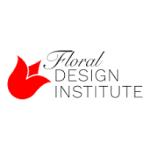Would a rose, by any other name, smell as sweet?
It would.
It would also look as beautiful.
However, despite all the attention, there is a litany of beautiful flowers.
Given the right arrangement, an assortment of flowers can have even more emphasis than the typical dozen roses.
If the idea of putting colors together and creating something magical interests you, floral designing might be up your alley.
Here, we lay out how to start a new career as a floral designer.
Steps to Become a Floral Designer
1. Get a Feel
Before looking into floral design jobs, spend some time in a plant nursery.
Not only is this a good place to pick up names and visuals, but you can also rule out any allergies that would make this a tough career to go through with.
2. Search Your Passion
To get started, one must have an interest in flowers.
If you can’t see the specific details that make each type unique, this might not be the field for you.
3. Practice Makes Pictures
Next, it wouldn’t hurt to put together a portfolio of some designs.
This is not a mandatory step, but it can show a future employer what kind of style to expect.
Professional experience is not necessary to make an informal portfolio.
4. Put in Applications
At this point, go ahead and apply for positions at local florists.
Try to think outside the box and check out stores where floral design is a provided service, like a grocery store.
With no experience, applicants would be most successful with entry-level positions.
This is a good time to inquire if the shop has an apprenticeship where you can learn the trade on the job.
5. Get Certified
Whether you can work up here or not, the last step to establishing yourself as a floral designer would be to become certified.
The Professional Floral Design Evaluation is taken online and is given by the American Institute of Floral Designers.
To get a better understanding of what’s on the test, get the AIFD Guide to Floral Design first, and give our practice test for floral designers a try beforehand.
It can be downloaded from their website.
Essentially, it takes students through topics such as care of flowers, principles of design, technique, applications, types of arrangements, and shop maintenance.
Licensing Requirements to Become a Floral Designer
There is no need to worry about a licensing requirement as there are no floral designer licenses.
However, you may want to invest in a certification as a way to get a leg up on the competition.
There are many online programs for floral design out there.
Online Training Programs

Floral Design Institute
FDI’s in-person course was retooled specifically for the digital world.
So, you’ll still be getting great instruction just through the computer.
This easy-to-follow, step-by-step program lays out the foundation of flowers and works up to good business sense.
Students can pick one of two directions; basic skills or advanced design.
If you’re fresh, basic is for beginners.
If you’re trying to fine-tune existing skills, advanced design can help you reach new career heights.
The only prerequisite for going advanced is either taking the basic course or having 500 hours working as a floral designer already.
Either option ends with a certification.
Basic Floral Design costs $2,250 and Advanced Floral Design costs $950.

Penn Foster Career School
This online program can be done at your convenience.
Penn Foster’s program is great for someone who is already working and can’t necessarily dedicate in-person class time to finishing classes.
Most students finish this floral design program in five months or less.
However, if you need extra time, it’s not a problem.
It may seem strange to take classes based on something hands-on in a digital environment.
To avoid being too disconnected, the course implements different teaching tactics.
For example, there is no heaving leaning on reading or looking at printouts.
Penn Foster wants students to be more engaged with the content.
So, the lectures are given through a series of video lectures.
The gift of video means students can rewatch as much as needed.
Got questions?
Students are encouraged to reach out to instructors as often as needed.
![]()
New York Institute of Art and Design
The fully accredited program at NYIAD wants students to come out with bold and beautiful designs for any occasion.
In addition, they want you to be savvy management-minded florists.
Not only do they teach floral design, but this program has a business section.
The goal of being a graduate of NYIAD isn’t just to be a skilled professional, but also to own a flower shop.
However, they do cater to everyone, from the casual interest to the career-minded florist.
Before committing, they send out prospective students a catalog detailing the program.
The website often offers a discount when you sign up for more info.
Another benefit to this program is the trial period.
If you get started and feel like it’s not the right fit, within two weeks, the money spent will be returned.
Speaking of money, they offer multiple payment plans to fit a wide range of budgets.

International Association of Professions Career College
Ready to be a professional florist?
IAP has been featured on many prime-time shows and publications.
This program is a hit for how interactive it is and the type of talent it produces.
In as little as four weeks, you can be a certified florist.
Most students complete the certification course between six and 12 weeks.
At IAP, creativity is the focal point in floral design.
They take a different approach to learning and ask you to lean on your creative juices as opposed to an instructor.
The course content is available to you to go through as a solo learner.
If you have additional questions, a member of the faculty will reach out.
Aside from the unusual instruction style, other benefits set this course apart.
A few such extras are a membership to the International Association of Professional Florists, a sealed certificate, and the Guide to Become a Florist textbook.
To get a certificate through this course, look out for prices as low as $149.
Salary
On average, a floral designer in the US can expect to make around $56,000 annually.
Of course, where you live and your experience level plays heavily into what side of $56,000 is more likely.
Bigger cities will be able to offer a higher salary, as will more experience.
If you’re freshly on the scene, $40,000 might be a reasonable expectation for where you are.
If you’ve been at it for quite some time, perhaps closer to $70,000 will be your take-home.






